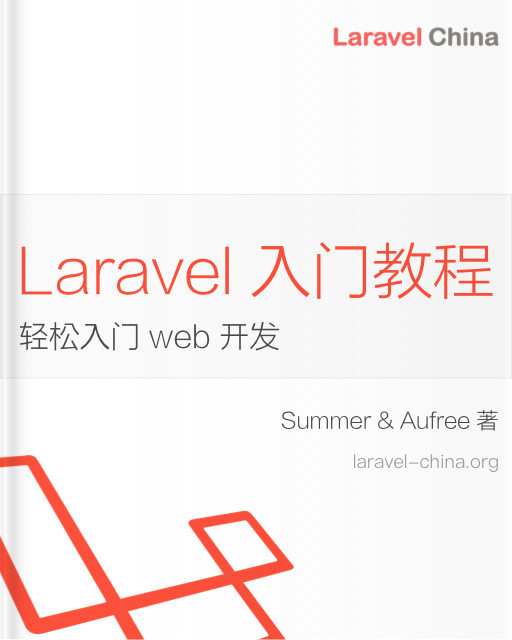看 Laravel 源代码了解 ServiceProvider 的加载
使用 Laravel 开始,我们总是绕不开 ServiceProvider 这个概念。在 Laravel 框架里到处充斥着 ServiceProvider —— AppServiceProvider、AuthServiceProvider、BroadcastServiceProvider、EventServiceProvider 和 RouteServiceProvider 等等。
还有我们在安装一些第三方插件时,都时不时有这么句话,将****ServiceProvider 加入到 config/app.php 的 providers 数组中。

难道咱们就不想知道 Laravel 是如何加载这些 ServiceProviders 的吗?
所以今天从源代码的运行来看看是怎么实现加载的?
看 Application 类
我们都知道 Laravel 的入口文件在 public/index.php
<?php
...
require __DIR__.'/../vendor/autoload.php';
...
$app = require_once __DIR__.'/../bootstrap/app.php';
/*
|--------------------------------------------------------------------------
| Run The Application
|--------------------------------------------------------------------------
|
| Once we have the application, we can handle the incoming request
| through the kernel, and send the associated response back to
| the client's browser allowing them to enjoy the creative
| and wonderful application we have prepared for them.
|
*/
$kernel = $app->make(Illuminate\Contracts\Http\Kernel::class);
$response = $kernel->handle(
$request = Illuminate\Http\Request::capture()
);
$response->send();
$kernel->terminate($request, $response);
这里先看载入 require_once __DIR__.'/../bootstrap/app.php',创建 app 对象。
<?php
/*
|--------------------------------------------------------------------------
| Create The Application
|--------------------------------------------------------------------------
|
| The first thing we will do is create a new Laravel application instance
| which serves as the "glue" for all the components of Laravel, and is
| the IoC container for the system binding all of the various parts.
|
*/
$app = new Illuminate\Foundation\Application(
realpath(__DIR__.'/../')
);
/*
|--------------------------------------------------------------------------
| Bind Important Interfaces
|--------------------------------------------------------------------------
|
| Next, we need to bind some important interfaces into the container so
| we will be able to resolve them when needed. The kernels serve the
| incoming requests to this application from both the web and CLI.
|
*/
$app->singleton(
Illuminate\Contracts\Http\Kernel::class,
App\Http\Kernel::class
);
$app->singleton(
Illuminate\Contracts\Console\Kernel::class,
App\Console\Kernel::class
);
$app->singleton(
Illuminate\Contracts\Debug\ExceptionHandler::class,
App\Exceptions\Handler::class
);
/*
|--------------------------------------------------------------------------
| Return The Application
|--------------------------------------------------------------------------
|
| This script returns the application instance. The instance is given to
| the calling script so we can separate the building of the instances
| from the actual running of the application and sending responses.
|
*/
return $app;直接返回的是 new Illuminate\Foundation\Application( realpath(__DIR__.'/../') Application 对象。
这个对象就是 Laravel 的「容器」。我们开始看看 Application 是怎么发现 ServiceProvider 的?
/**
* Create a new Illuminate application instance.
*
* @param string|null $basePath
* @return void
*/
public function __construct($basePath = null)
{
if ($basePath) {
$this->setBasePath($basePath);
}
$this->registerBaseBindings();
$this->registerBaseServiceProviders();
$this->registerCoreContainerAliases();
}主要是完成这四个方法。第一个和最后一个方法暂且不表;我们主要看:
$this->registerBaseBindings();$this->registerBaseServiceProviders();
registerBaseBindings()
/**
* Register the basic bindings into the container.
*
* @return void
*/
protected function registerBaseBindings()
{
static::setInstance($this);
$this->instance('app', $this);
$this->instance(Container::class, $this);
$this->instance(PackageManifest::class, new PackageManifest(
new Filesystem, $this->basePath(), $this->getCachedPackagesPath()
));
}前两个主要是绑定 Application 对象和 Container 对象。重点分析 PackageManifest 对象之前,我们看看 $this->getCachedPackagesPath()这个函数:
/**
* Get the path to the cached packages.php file.
*
* @return string
*/
public function getCachedPackagesPath()
{
return $this->bootstrapPath().'/cache/packages.php';
}这个就是我们 bootstrap/cache/packages.php文件,这个文件的内容我们看看:
<?php return array (
'fideloper/proxy' =>
array (
'providers' =>
array (
0 => 'Fideloper\\Proxy\\TrustedProxyServiceProvider',
),
),
'encore/laravel-admin' =>
array (
'providers' =>
array (
0 => 'Encore\\Admin\\AdminServiceProvider',
),
'aliases' =>
array (
'Admin' => 'Encore\\Admin\\Facades\\Admin',
),
),
'laravel/tinker' =>
array (
'providers' =>
array (
0 => 'Laravel\\Tinker\\TinkerServiceProvider',
),
),
'rebing/graphql-laravel' =>
array (
'providers' =>
array (
0 => 'Rebing\\GraphQL\\GraphQLServiceProvider',
),
'aliases' =>
array (
'GraphQL' => 'Rebing\\GraphQL\\Support\\Facades\\GraphQL',
),
),
'tymon/jwt-auth' =>
array (
'aliases' =>
array (
'JWTAuth' => 'Tymon\\JWTAuth\\Facades\\JWTAuth',
'JWTFactory' => 'Tymon\\JWTAuth\\Facades\\JWTFactory',
),
'providers' =>
array (
0 => 'Tymon\\JWTAuth\\Providers\\LaravelServiceProvider',
),
),
'noh4ck/graphiql' =>
array (
'providers' =>
array (
0 => 'Graphiql\\GraphiqlServiceProvider',
),
),
'rollbar/rollbar-laravel' =>
array (
'providers' =>
array (
0 => 'Rollbar\\Laravel\\RollbarServiceProvider',
),
'aliases' =>
array (
'Rollbar' => 'Rollbar\\Laravel\\Facades\\Rollbar',
),
),
'fanly/log2dingding' =>
array (
'providers' =>
array (
0 => 'Fanly\\Log2dingding\\FanlyLog2dingdingServiceProvider',
),
),
);通过分析,可以看出这个文件主要是放着我们自己引入第三方的 ServiceProviders 和 aliases,我们对照项目根路径的 composer.json 你就可以证实了:
"require": {
"php": ">=7.0.0",
"encore/laravel-admin": "1.5.*",
"fanly/log2dingding": "^0.0.2",
"fideloper/proxy": "~3.3",
"guzzlehttp/guzzle": "^6.3",
"laravel/framework": "5.5.*",
"laravel/tinker": "~1.0",
"noh4ck/graphiql": "@dev",
"overtrue/phplint": "^1.1",
"rebing/graphql-laravel": "^1.10",
"rollbar/rollbar-laravel": "^2.3",
"tymon/jwt-auth": "^1.0@dev"
},至于这个 bootstrap/cache/packages.php 文件内容怎么产生的,我们后面会说到。
我们回来分析 new PackageManifest(),类中的几个函数的作用,显而易见:
/**
* 这个函数是将 package.php 文件的插件数组的 `providers`整合成一个 Collection 输出
*/
public function providers() {}
/**
* 插件中的 `aliases` 整合成 Collection 输出。
*
* @return array
*/
public function aliases() {}
/**
* 这个是关键,从 verdor/composer/installed.json 文件中获取所有通过 composer 安装的插件数组,然后再通过用 `name` 绑定对应的 `ServiceProvider`,构成数组,然后再排除每个插件的 `dont-discover` 和项目 composer.json 填入的 `dont-discover`。
* 这也是 Laravel 包自动发现的核心所在。
*
*/
public function build()
{
$packages = [];
if ($this->files->exists($path = $this->vendorPath.'/composer/installed.json')) {
$packages = json_decode($this->files->get($path), true);
}
$ignoreAll = in_array('*', $ignore = $this->packagesToIgnore());
$this->write(collect($packages)->mapWithKeys(function ($package) {
return [$this->format($package['name']) => $package['extra']['laravel'] ?? []];
})->each(function ($configuration) use (&$ignore) {
$ignore = array_merge($ignore, $configuration['dont-discover'] ?? []);
})->reject(function ($configuration, $package) use ($ignore, $ignoreAll) {
return $ignoreAll || in_array($package, $ignore);
})->filter()->all());
}
/**
* 最后就把上面的满足的 ServiceProvider 写入到文件中,就是上文我们说的 `bootstrap/cache/packages.php`
*/
protected function write(array $manifest) {}到目前为止,我们找到了需要加载的第三方的 ServiceProvider 了。
registerBaseServiceProviders()
接下来我们看看这个 registerBaseServiceProviders() 方法了。
/**
* Register all of the base service providers.
*
* @return void
*/
protected function registerBaseServiceProviders()
{
$this->register(new EventServiceProvider($this));
$this->register(new LogServiceProvider($this));
$this->register(new RoutingServiceProvider($this));
}这里主要注册三个 ServiceProvider,具体功能后面详聊。
Kernel
我们简单过了一遍 new Application,我们回到 index.php 继续往下看:
$kernel = $app->make(Illuminate\Contracts\Http\Kernel::class);
$response = $kernel->handle(
$request = Illuminate\Http\Request::capture()
);
$response->send();这个 $kernel 就是 Laravel 的「核」,而 $kernel->handle() 方法就是 Laravel 的「核中之核」了 —— 即,根据输入的 Request,输出 response。完成请求到响应的过程。
我们进入 $kernel->handle() 方法。
/**
* Handle an incoming HTTP request.
*
* @param \Illuminate\Http\Request $request
* @return \Illuminate\Http\Response
*/
public function handle($request)
{
try {
$request->enableHttpMethodParameterOverride();
$response = $this->sendRequestThroughRouter($request);
} catch (Exception $e) {
$this->reportException($e);
$response = $this->renderException($request, $e);
} catch (Throwable $e) {
$this->reportException($e = new FatalThrowableError($e));
$response = $this->renderException($request, $e);
}
$this->app['events']->dispatch(
new Events\RequestHandled($request, $response)
);
return $response;
}排除其它「干扰」东西,眼睛关注到这行代码:
$response = $this->sendRequestThroughRouter($request);这也暴露了,网络请求的三要素:request、router 和 response。
/**
* Send the given request through the middleware / router.
*
* @param \Illuminate\Http\Request $request
* @return \Illuminate\Http\Response
*/
protected function sendRequestThroughRouter($request)
{
$this->app->instance('request', $request);
Facade::clearResolvedInstance('request');
$this->bootstrap();
return (new Pipeline($this->app))
->send($request)
->through($this->app->shouldSkipMiddleware() ? [] : $this->middleware)
->then($this->dispatchToRouter());
}但今天我们说的不是考虑执行的问题,我们需要知道什么时候加载我们的 ServiceProviders 所以在 return 执行之前的代码 ($this->bootstrap();) 就是初始化 ServiceProviders等信息的过程
/**
* Bootstrap the application for HTTP requests.
*
* @return void
*/
public function bootstrap()
{
if (! $this->app->hasBeenBootstrapped()) {
$this->app->bootstrapWith($this->bootstrappers());
}
}
// Application 类:
/**
* Run the given array of bootstrap classes.
*
* @param array $bootstrappers
* @return void
*/
public function bootstrapWith(array $bootstrappers)
{
$this->hasBeenBootstrapped = true;
foreach ($bootstrappers as $bootstrapper) {
$this['events']->fire('bootstrapping: '.$bootstrapper, [$this]);
$this->make($bootstrapper)->bootstrap($this);
$this['events']->fire('bootstrapped: '.$bootstrapper, [$this]);
}
}到此我们知道,实际上遍历执行 $bootstrappers->bootstrap($this)
此时我们看看 $bootstrappers:
protected $bootstrappers = [
\Illuminate\Foundation\Bootstrap\LoadEnvironmentVariables::class
\Illuminate\Foundation\Bootstrap\LoadConfiguration::class,
\Illuminate\Foundation\Bootstrap\HandleExceptions::class,
\Illuminate\Foundation\Bootstrap\RegisterFacades::class,
\Illuminate\Foundation\Bootstrap\RegisterProviders::class,
\Illuminate\Foundation\Bootstrap\BootProviders::class,
];这六个类的作用主要是:加载环境变量、config、异常处理、注册 facades、和最后我们关注的 ServiceProvider 的 register和 boot。
我们分别来看看。
RegisterProviders
class RegisterProviders
{
/**
* Bootstrap the given application.
*
* @param \Illuminate\Contracts\Foundation\Application $app
* @return void
*/
public function bootstrap(Application $app)
{
$app->registerConfiguredProviders();
}
}实际上是调用 Application 的 registerConfiguredProviders():
/**
* Register all of the configured providers.
*
* @return void
*/
public function registerConfiguredProviders()
{
$providers = Collection::make($this->config['app.providers'])
->partition(function ($provider) {
return Str::startsWith($provider, 'Illuminate\\');
});
$providers->splice(1, 0, [$this->make(PackageManifest::class)->providers()]);
(new ProviderRepository($this, new Filesystem, $this->getCachedServicesPath()))
->load($providers->collapse()->toArray());
}这个就厉害了。加载所有已配置的 ServiceProvider,主要包含了在配置文件 config/app.php 里的 providers,上文讲述的第三方所有满足的 ServiceProviders,以及在 boostrap/cached/service.php 中的所有 Providers。
最后执行 ProviderRepository::load 方法,进行遍历 register:
/**
* Register the application service providers.
*
* @param array $providers
* @return void
*/
public function load(array $providers)
{
$manifest = $this->loadManifest();
// First we will load the service manifest, which contains information on all
// service providers registered with the application and which services it
// provides. This is used to know which services are "deferred" loaders.
if ($this->shouldRecompile($manifest, $providers)) {
$manifest = $this->compileManifest($providers);
}
// Next, we will register events to load the providers for each of the events
// that it has requested. This allows the service provider to defer itself
// while still getting automatically loaded when a certain event occurs.
foreach ($manifest['when'] as $provider => $events) {
$this->registerLoadEvents($provider, $events);
}
// We will go ahead and register all of the eagerly loaded providers with the
// application so their services can be registered with the application as
// a provided service. Then we will set the deferred service list on it.
foreach ($manifest['eager'] as $provider) {
$this->app->register($provider);
}
$this->app->addDeferredServices($manifest['deferred']);
}
/**
* Register the load events for the given provider.
*
* @param string $provider
* @param array $events
* @return void
*/
protected function registerLoadEvents($provider, array $events)
{
if (count($events) < 1) {
return;
}
$this->app->make('events')->listen($events, function () use ($provider) {
$this->app->register($provider);
});
}register 之后,我们可以看看 boot 方法了。
BootProviders
class BootProviders
{
/**
* Bootstrap the given application.
*
* @param \Illuminate\Contracts\Foundation\Application $app
* @return void
*/
public function bootstrap(Application $app)
{
$app->boot();
}
}我们按图索骥:
/**
* Boot the application's service providers.
*
* @return void
*/
public function boot()
{
if ($this->booted) {
return;
}
// Once the application has booted we will also fire some "booted" callbacks
// for any listeners that need to do work after this initial booting gets
// finished. This is useful when ordering the boot-up processes we run.
$this->fireAppCallbacks($this->bootingCallbacks);
array_walk($this->serviceProviders, function ($p) {
$this->bootProvider($p);
});
$this->booted = true;
$this->fireAppCallbacks($this->bootedCallbacks);
}
...
/**
* Boot the given service provider.
*
* @param \Illuminate\Support\ServiceProvider $provider
* @return mixed
*/
protected function bootProvider(ServiceProvider $provider)
{
if (method_exists($provider, 'boot')) {
return $this->call([$provider, 'boot']);
}
}也就是说遍历执行所有 ServiceProviders 的 boot() (前提是该 ServiceProvider 有定义该方法)。
总结
通过分析 index.php 执行过程,发现 Application 主要是发现各种 ServiceProviders,而 $kernel 更多的是在处理 Request请求之前,把所有的 ServiceProvider进行注册 (register),然后再 boot。把所有的 ServiceProviders装载进系统内存中,供处理各式各样的 Request 使用。
而每一个 ServiceProvider 各司其职,负责各自不同的职能,来满足 Laravel 系统的各种需要。
下文我们将重点说说这些 ServiceProvider 的含义和作用。敬请期待!
未完待续
本作品采用《CC 协议》,转载必须注明作者和本文链接







 关于 LearnKu
关于 LearnKu




推荐文章: